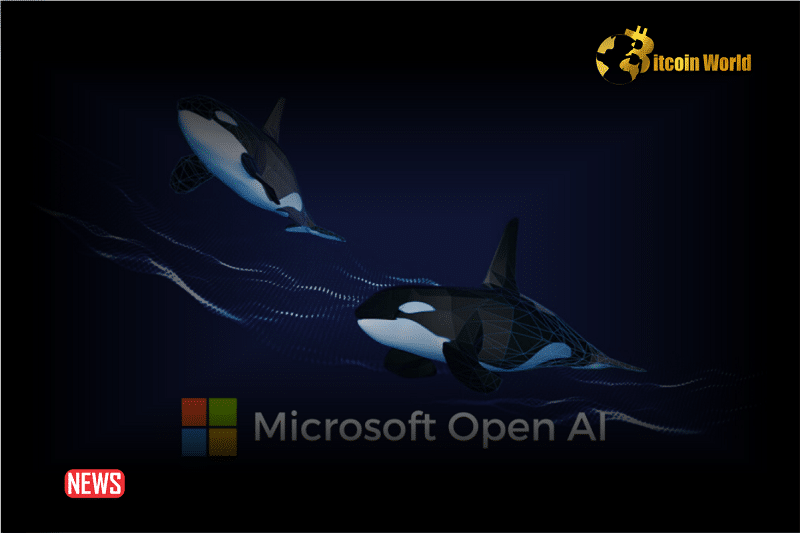In a groundbreaking move, Microsoft Research, under the leadership of Satya Nadella, has unveiled Orca 2, a game-changer in the world of AI language models. Forget the notion that bigger is always better! Orca 2, in its compact form, is proving to be a David among Goliaths, rivaling and even surpassing the capabilities of behemoths like Meta’s Llama-2 Chat-70B. Yes, you read that right – smaller models are now punching way above their weight!
But how is Orca 2 achieving this seemingly impossible feat? Let’s dive into the details of this exciting AI innovation.
Orca 2: The Rise of the Efficient AI Model
Orca 2 isn’t just another language model; it’s a strategic leap towards more efficient and accessible AI. Building on the foundations of the original Orca model, Orca 2 comes in two lean sizes:
- 7 Billion Parameters: A nimble and powerful model for various applications.
- 13 Billion Parameters: Enhanced capabilities for more complex tasks, still remarkably compact.
These models are designed to emulate the intricate reasoning processes of much larger models, showcasing that intelligent design and training can trump sheer size. Think of it as learning to fight smart, not just big.
Why is Orca 2’s Reasoning Ability a Big Deal?
Microsoft researchers put it best: “With Orca 2, we continue to show that improved training signals and methods can empower smaller language models to achieve enhanced reasoning abilities, which are typically found only in much larger language models.”
This isn’t just about making smaller models; it’s about making them smarter. Orca 2 excels in complex reasoning, even in challenging zero-shot scenarios where the model encounters tasks without prior specific examples. This ability to reason effectively with limited resources is what sets Orca 2 apart.
Read Also: Microsoft Unveils Azure Cobalt CPU, A 128-Core Processor For Cloud Computing And AI
Orca 2 vs. The Giants: How Does it Stack Up?
The real test of any AI model is its performance. Orca 2 has made headlines by not just competing with, but often outperforming language models that are five to ten times larger! Imagine a lightweight sports car outmaneuvering a massive truck on a complex race track – that’s the essence of Orca 2’s achievement.
Here’s a quick comparison:
| Feature | Orca 2 (7B & 13B) | Llama-2 Chat-70B |
|---|---|---|
| Size | Compact | Very Large |
| Reasoning Performance | Matches or Surpasses Llama-2 70B in many tasks | Excellent |
| Efficiency | High | Lower due to size |
| Accessibility | More accessible due to lower computational needs | Requires significant computational resources |
This performance leap is a direct result of Microsoft’s advanced training techniques and a focus on quality over quantity in model parameters.
Open Source Orca 2: AI for Everyone
In a move that benefits the entire AI community, Microsoft has open-sourced both Orca 2 models. This decision underscores their commitment to:
- Accelerating AI Research: Open access allows researchers worldwide to study, modify, and improve Orca 2.
- Fostering Collaboration: Sharing the models promotes collective progress in AI development.
- Democratizing AI: Making advanced AI technology available to a wider audience, not just tech giants.
By making Orca 2 freely available, Microsoft is actively contributing to a future where powerful AI is more accessible and inclusive.
What Does Orca 2 Mean for Businesses?
Orca 2 is particularly good news for enterprises, especially those with budget constraints. Here’s why:
- Reduced Infrastructure Costs: Smaller models require less computing power, significantly lowering operational expenses.
- Efficient NLP Solutions: Businesses can achieve state-of-the-art natural language processing without massive investments in hardware.
- Wider Adoption of AI: Orca 2 makes advanced AI capabilities accessible to a broader range of businesses, including startups and SMEs.
Orca 2 essentially lowers the barrier to entry for leveraging sophisticated AI, enabling businesses to innovate and compete more effectively.
Is Bigger Really Better in AI? Orca 2 Says No!
Microsoft’s Orca 2 challenges the conventional wisdom that larger models are inherently superior. By demonstrating that smaller models can achieve comparable or even better reasoning capabilities, Orca 2 is:
- Revolutionizing AI Accessibility: Making powerful AI available to more organizations and individuals.
- Promoting Sustainable AI: Efficient models reduce the environmental impact associated with training and running massive AI systems.
- Inspiring Innovation: Encouraging researchers to focus on smarter algorithms and training methods, rather than just scaling up model size.
Orca 2 is a testament to the power of innovation and intelligent design in AI, proving that efficiency and effectiveness can go hand in hand.
Read Also: Microsoft, Tencent And Other Tech Giants Join Decentralized Infura Network
The Future is Efficient: What’s Next for Orca 2 and AI?
Orca 2 is more than just a new model; it’s a signpost pointing towards a future of more efficient, accessible, and democratized AI. As AI research progresses, Orca 2 serves as a powerful reminder that:
- Innovation is Key: Breakthroughs in training methods and model architecture can yield remarkable results.
- Accessibility Matters: Making AI technology available to a wider audience is crucial for driving progress and impact.
- Efficiency is the Future: Sustainable and efficient AI models are essential for long-term growth and adoption.
Microsoft’s Orca 2 is not just participating in the AI revolution; it’s actively leading the charge towards a smarter, more inclusive, and efficient AI future. Keep an eye on Orca 2 – it’s a small model with a very big impact!
Disclaimer: The information provided is not trading advice, Bitcoinworld.co.in holds no liability for any investments made based on the information provided on this page. We strongly recommend independent research and/or consultation with a qualified professional before making any investment decisions.


